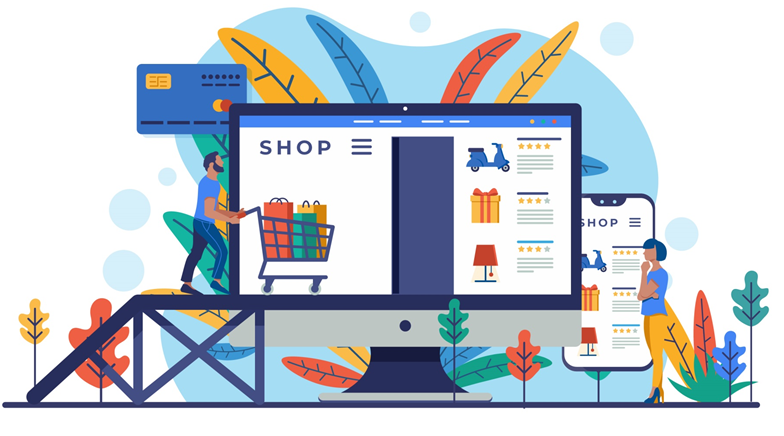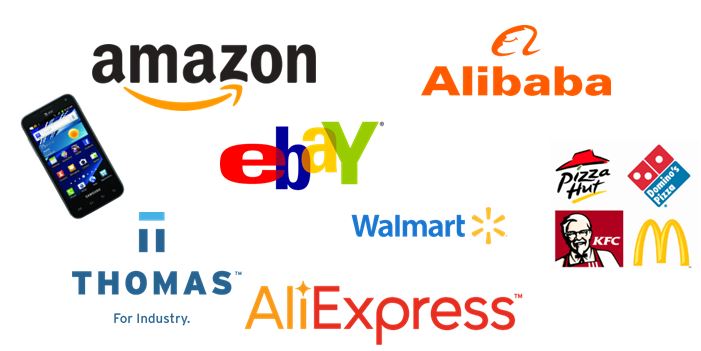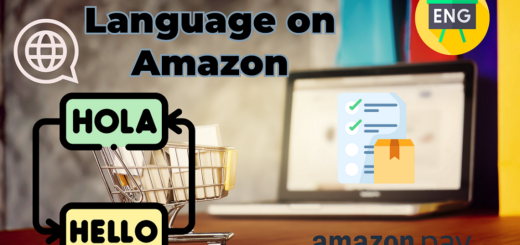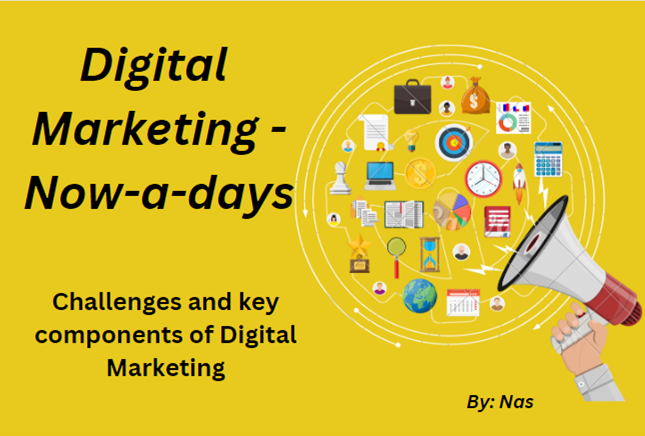What is e-commerce: Definition and best example of e-commerce

Over the Internet “what is e-commerce” is the most commonly searched question and discussed. E-commerce stands for electronic commerce, which relates to the people who buy, and shop for goods and selling of their services over the Internet. It has a major impact on the business world by changing the way people interact with companies and conduct business. E-commerce platforms enable businesses to reach a wider audience, work 24/7, and streamline the buying process for customers, making it more convenient and economical.
Definition of what is e-commerce and importance of learning:
E-commerce learning, also known as electronic commerce learning, refers to the process of acquiring knowledge and skills related to conducting business and transactions over the Internet. It involves understanding the principles, strategies, and technologies used in the online buying and selling of goods and services.
Key Components of e-commerce:
Platform – The Most Important
Online Storefront: The heart of an e-commerce operation is the website or online storefront, where products and services are displayed, and transactions take place. This storefront is designed to be user-friendly, visually appealing, and efficient in guiding customers through the shopping process.
Product Management
Product Catalog: The product catalog showcases the range of items or services available for purchase. It includes product descriptions, images, prices, and other relevant details to help customers make informed decisions.
Shopping Cart: The shopping cart is a virtual container that allows customers to add items they wish to purchase as they browse the online store. It holds the selected products until the buyer proceeds to the checkout.
Checkout Process: The checkout process involves the final steps of the purchase. Customers enter their billing and shipping information, choose a payment method, and confirm their order. Secure and easy-to-use checkout systems are essential to reduce cart abandonment and encourage conversions.

Payment and Security
Payment Gateway: The payment gateway is the technology that facilitates the secure processing of online transactions. It encrypts sensitive information such as credit card details to protect customers’ data from potential threats.
Security Measures: E-commerce platforms must prioritize security to safeguard customer information and financial transactions. Secure Socket Layer (SSL) certificates, two-factor authentication, and other security measures are implemented to build trust and prevent data breaches.
Inventory and Shipment Management
Inventory Management: Businesses need effective inventory management systems to keep track of their stock levels, update product availability in real-time, and avoid selling items that are out of stock.
Order Fulfillment: After an order is placed, the process of order fulfillment begins. This involves picking, packing, and shipping the products to the customer’s designated address. Some businesses handle fulfillment in-house, while others outsource it to third-party logistics providers.
Last But Not The Least
Customer Support: Providing excellent customer support is crucial for e-commerce success. This includes responding to inquiries, addressing complaints, and offering assistance to customers before, during, and after the purchase process.
Types of E-commerce Models:
Business-to-Consumer (B2C): The most common form of e-commerce, where businesses sell products or services directly to individual consumers. Online retailers like Amazon and clothing stores selling directly to customers are examples of B2C e-commerce.
Business-to-Business (B2B): In this model, businesses sell products or services to other businesses. This could involve bulk purchases of raw materials or supplies. E-commerce platforms catering to B2B transactions are designed to handle large-scale and repeat orders.
Consumer-to-Consumer (C2C): C2C e-commerce enables individuals to sell products or services directly to other individuals. Online marketplaces like eBay and Craigslist are popular platforms for C2C transactions.
Consumer-to-Business (C2B): This model involves individuals offering products or services to businesses. An example would be a freelance writer offering writing services to a company.
Business-to-Government (B2G): B2G e-commerce refers to businesses selling products or services to governmental organizations or agencies.
to learn more about e-commerce models read the article “Best Business Models of What is e-commerce“.
Advantages of E-commerce:
Global Reach: E-commerce allows businesses to access a global customer base, overcoming geographical limitations. Therefore, you have to focus on digital marketing also.
Convenience: Customers can shop anytime, anywhere, and have products delivered to their doorstep, eliminating the need to visit physical stores.
Cost Efficiency: Running an e-commerce business often involves lower overhead costs compared to traditional brick-and-mortar stores.
Personalization: E-commerce platforms can leverage data to personalize product recommendations and offers for individual customers.
Data Insights: E-commerce provides businesses with valuable data on customer behavior, enabling them to make data-driven decisions.
Accessibility: E-commerce enables people with disabilities to access products and services more easily.

Challenges of E-commerce:
Competition: The barrier to entry is relatively low, leading to intense competition in the online marketplace. Therefore, you should have the knowledge of Google Ads.
Security Risks: E-commerce platforms are susceptible to cyber-attacks and data breaches, requiring robust security measures.
Logistics and Fulfillment: Efficient and reliable shipping is essential for customer satisfaction.
Customer Trust: Establishing trust is crucial, as customers share sensitive information during online transactions.
Returns and Refunds: Managing returns and processing refunds can be complex and impact profit margins.
Technological Advancements: Staying updated with the latest technologies is necessary to remain competitive.
Here are some well-known examples, companies, and platforms:
Top 5 Online e-commerce Platforms
1. Amazon: One of the largest and most popular e-commerce platforms globally, Amazon started as an online bookstore and has expanded to offer a vast array of products, including electronics, clothing, household items, and more. It operates on a B2C model and provides a marketplace for third-party sellers as well.
2. eBay: A pioneer in online auctions and consumer-to-consumer (C2C), eBay allows individuals and businesses to buy and sell a wide range of products through auctions or fixed-price listings.
3. Alibaba: A prominent B2B platform based in China, Alibaba connects global buyers with suppliers and manufacturers, offering a wide range of products in bulk quantities.
4. Walmart: A retail giant, Walmart offers an extensive online store (www.walmart.com) in addition to its physical locations. It operates on a B2C model, selling a diverse range of products.

5. Etsy: Catering to handmade, vintage, and unique products, Etsy is a C2C e-commerce platform that allows artisans, crafters, and small businesses to showcase and sell their creations.
More e-commerce Platforms
6. Shopify: Rather than being an online marketplace itself, Shopify is an e-commerce platform that enables businesses of all sizes to create their online stores. It provides a range of tools and features for setting up and managing an e-commerce business.
7. Zappos: Specializing in footwear and apparel, Zappos is an online shoe and clothing retailer known for its extensive selection and customer service.
8. UberEats: An example of the growing trend of food delivery services, UberEats allows customers to order food from local restaurants and have it delivered to their doorstep.
9. ASOS: A popular fashion retailer, ASOS operates exclusively online, offering a vast selection of clothing, accessories, and beauty products.
10. Best Buy: A major electronics retailer, Best Buy offers online sales of a wide range of consumer electronics, appliances, and tech-related products.
11. Netflix: While primarily known for its streaming services, Netflix is also an e-commerce platform, allowing customers to subscribe and pay for their entertainment services online.
12. Airbnb: An online marketplace for lodging and vacation rentals, Airbnb connects hosts who have accommodations to rent with travelers seeking a place to stay.
These are just a few examples, but there are countless other e-commerce companies and platforms covering various industries and niches. E-commerce continues to grow and evolve, shaping the way we shop and do business in the digital age.
These are just a few examples, but there are countless more available on this topic as well as companies and platforms covering various industries and niches. It is rapidly growing and evolve, shaping the way we shop and do business in the digital age.



